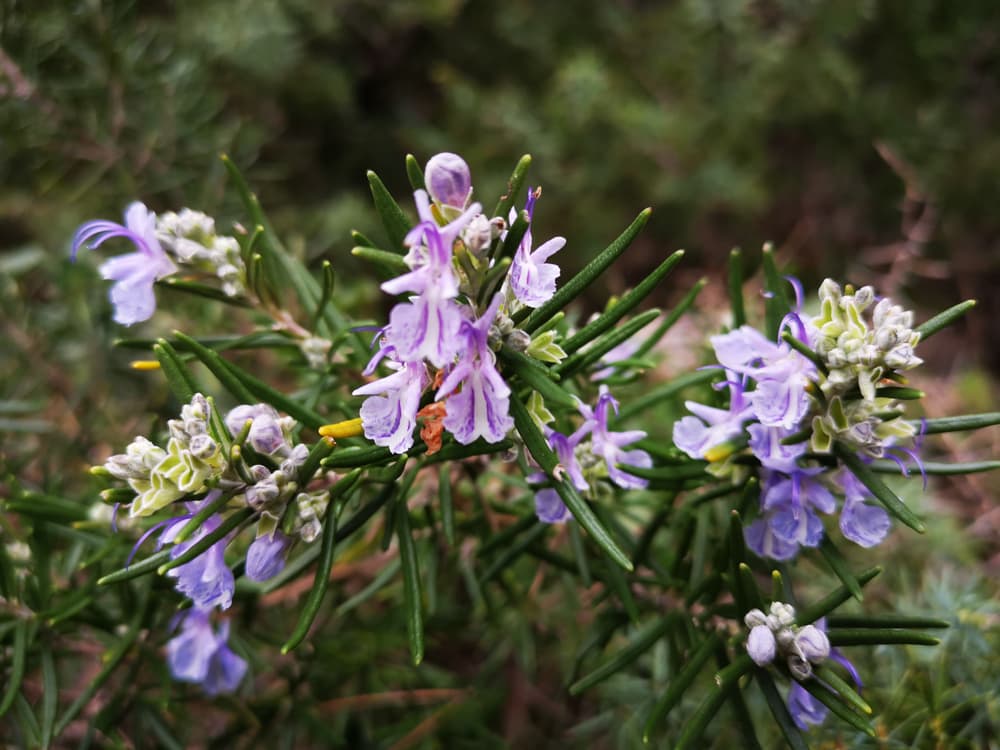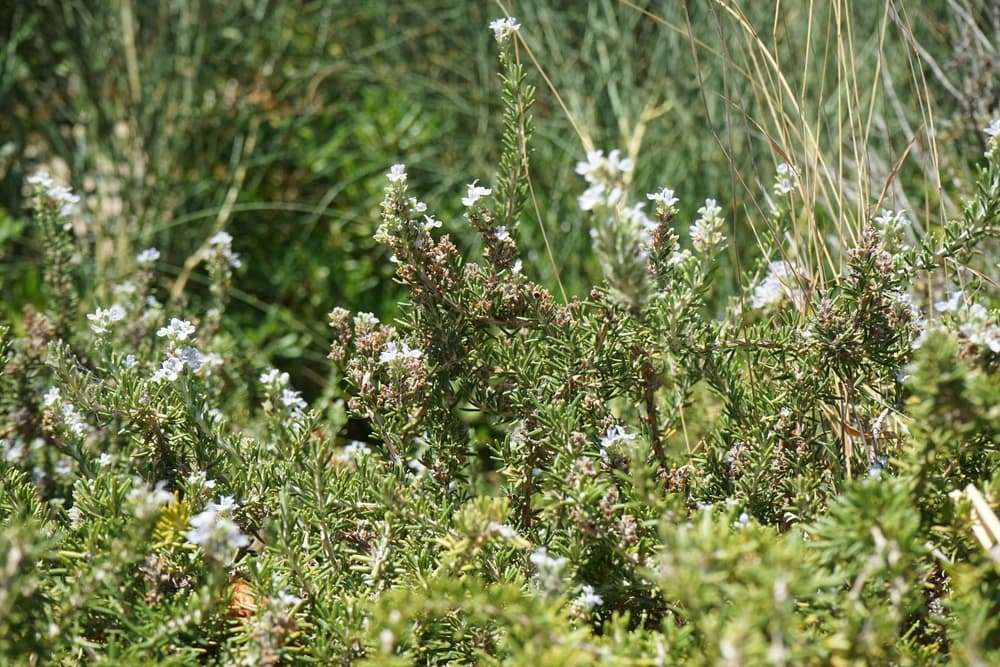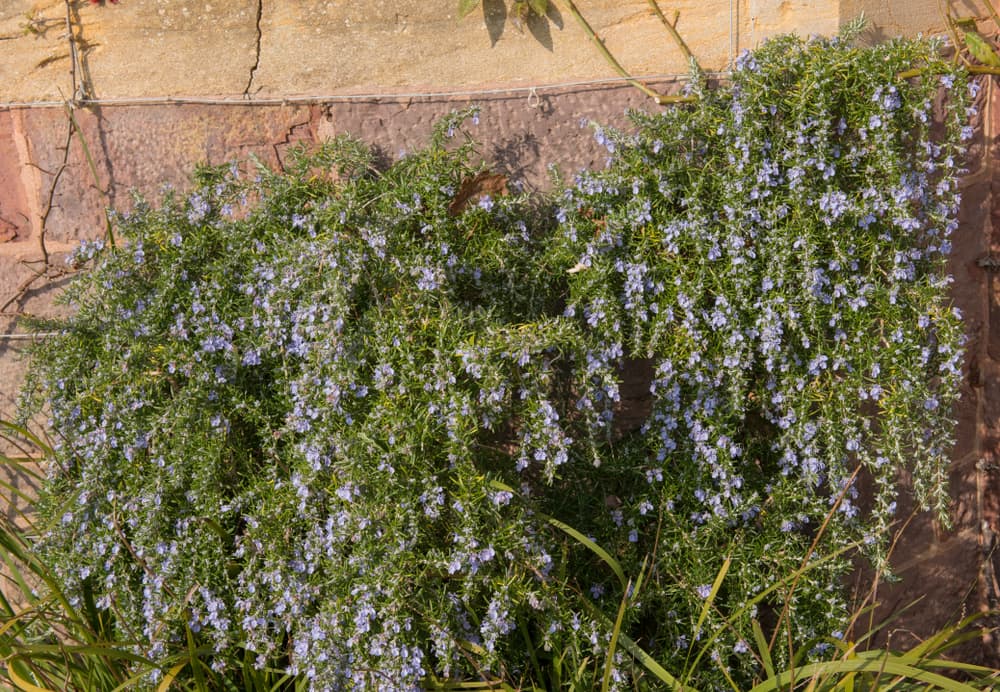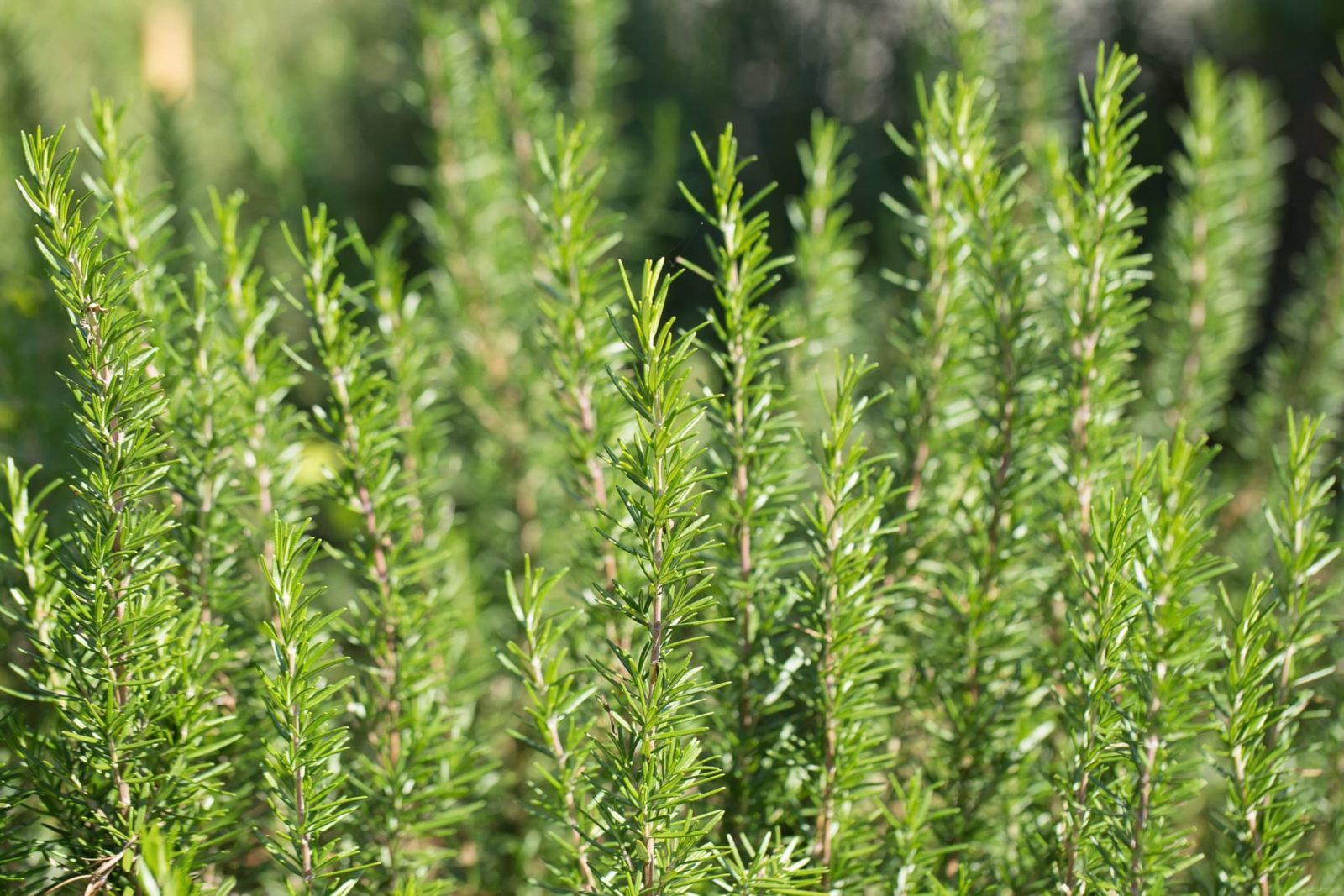HERBS > ROSEMARY
Chris is a gardening writer and nature enthusiast. He graduated from Oxford Brookes University in 2022 with an MA in Psychology. Chris works with the Leeds Green Action Society, helping their food cooperative by growing various fruit and vegetables on their two allotments in Hyde Park, Leeds.
Reviewed By COLIN SKELLY

Colin is a Horticulturist and Horticultural Consultant with experience in a range of practical and managerial roles across heritage, commercial and public horticulture. He holds the Royal Horticultural Society’s Master of Horticulture award and has a particular interest in horticultural ecology and naturalistic planting for habitat and climate resilience.
Contributions From NICOLA MACNAUGHTON

Nicola Macnaughton is a Professional Horticulturist and Writer. Nicola has completed a two year diploma in Herbology with the Royal Botanic Garden Edinburgh and obtained her Permaculture Design Certificate in Glasgow. She is also a member of the Chartered Institute of Horticulture. Since 2022, Nicola has worked as a Horticultural Consultant for the charity Bearsden in Bloom.

Sonya Patel Ellis is a garden writer and the author of several books, including The Collins Botanical Bible and The Modern Gardener. Sonya has received an RHS Level 2 Qualification and is a member of the Garden Media Guild. She also frequently runs garden workshops and action projects for both adults and children in London.
IN THIS GUIDE
ROSEMARY GUIDES
Rosemary is one distinctive herb; its needle-like foliage adds texture and structure to gardens, and its aromatic scent can transport you to a balmy evening somewhere in the Mediterranean.
“If I had to pick one plant I couldn’t live without, it would have to be rosemary,” shares Garden Writer Sonya Patel Ellis.
“I’ve had one plant in a container for nearly 20 years and it doesn’t matter what you throw at it – drought, snow, high winds, dust from nearby building projects – it just keeps shining through with its dark green, glossy, needle-like evergreen leaves, combined with the prettiest purple and white flowers for most of the year.”
This delectable plant is also so easy to grow and produces romantic, delicate, pale blue flowers making it one of the most popular herbs among gardeners in the UK.
In fact, rosemary grows so prolifically that managing and pruning are where you’ll spend most of your time caring for this perennial, evergreen shrub.
Overview
| Botanical Name | Salvia rosmarinus |
| Common Name(s) | Rosemary |
| Plant Type | Herb |
| Native Area | Mediterranean |
| Hardiness Rating | H4-H5 |
| Foliage | Needle-like aromatic foliage |
| Flowers | Purple, lavender, white |
| When To Sow | March, April, May, September, October |
| Flowering Months | June, July |
| When To Prune | June, July, August, September |
Sunlight
Preferred
Full Sun
Exposure
Sheltered
Size
Height
Varies
Spread
Varies
Soil
Preferred
Chalk, Loam, Sand
Moisture
Well drained
pH
Neutral-Acid
With recent events in the world, many gardeners are trying to become even more self-sufficient.
Including herbs like rosemary in your garden is a great way to do this, and can help you add gorgeous flavour to your meals, without having to make unwanted shopping trips.

Rosemary is a fragrant, evergreen herb and, like other herbs such as oregano, lavender, thyme and basil, is a member of the mint family.1Petruzzello, M. (2015a, August 19). List of plants in the family Lamiaceae. Encyclopedia Britannica. Retrieved March 23, 2023, from https://www.britannica.com/topic/list-of-plants-in-the-family-Lamiaceae-2035853
Hailing from the Meditteranean, rosemary favours sunny and sheltered spots and, being an evergreen, its leaves can be harvested year-round.2Rosemary – Salvia rosmarinus. (n.d.). Kew Royal Botanic Gardens. Retrieved March 23, 2023, from https://www.kew.org/plants/rosemary
Why Grow Rosemary?
Rosemary has been a real tradition in country garden cottages for generations, but these days you will see them in much more urban settings thanks to their versatility, charm and many uses.

If you have any reservations about growing rosemary, then allow us to elaborate on why it really is the cat’s pyjamas:
- Rosemary is an excellent addition to many dishes, from roast chicken to roast lamb, salads to soups, not to mention the extra special something they offer for BBQs. This herb is the gift that keeps on giving.
- It fills your garden with its signature scent.
- No matter how tiny your garden is, you can still grow rosemary, it grows easily and speedily, making it a rewarding plant for any garden.
Rosemary Types
There are many, many strains of rosemary spanning a broad spectrum of features.
If you are struggling to choose the right variety for your garden, we have put together a list of things to consider.
Creeping Rosemary

Recommended Variety: Rosmarinus officinalis ‘Prostratus Group’
A low-growing rosemary is a perfect option if you have a modest-sized garden.
These varieties are well-suited to pots and containers and will also cascade down beautifully if planted in window boxes and planters.
Creeping rosemary varieties grow no taller than 0.5m in height, but they can spread as far as 2-3m wide, which also makes them terrific for trailing over walls.
Given how far this rosemary can spread, you will need to either allow for the space they need to grow or prune your plant effectively.
“I grow my ‘Prostratus’ types for cascading over the side of containers,” says Sonya.
“I recently visited the lovely island of Skyros in Greece and there was the most impressive 5m long clipped hedge of prostrate rosemary that felt and smelled incredible, especially at dusk and dawn. It will forever be imprinted on my senses.”
Mid-Height Rosemary

Recommended Variety: Salvia rosmarinus ‘Rosea’
As the name suggests, rosemary varieties in this category grow to a mid-height, usually growing no taller than 1m in height and spreading up to 1m in width.
This variety can provide great ground cover for slopes and hard-to-reach areas of your garden.
That said, with all types of rosemary it will spread as far as it can so if you are planting in a more confined area, you do need to keep an eye on it to prevent it taking over.
Tall Rosemary

Recommended Variety: S. rosmarinus ‘Albiflora Group’
Needless to say, this category of rosemary represents the tallest growing members of the family.
These varieties can grow up to 2.5m tall and up to 2.5m wide.
If you have the space for this plant, tall rosemary can bring a tremendous amount of texture, structure and interest to your garden.
Smaller varieties make themselves known thanks to their unforgettable fragrance.
The taller plants also make their presence known with their unique foliage which comes in shades of deep green, bright green and yellow-gold.
How To Grow Rosemary
Rosemary grows best in full sun, in a sheltered spot with well-drained soil.
If planted straight into the garden then it is likely the young plants will be sitting in wet soil over the winter which can be extremely damaging.
For this reason, we recommend planting rosemary in pots and containers and allowing it to establish itself for a few years before transplanting it into your garden.

“Mediterranean herbs such as Rosemary do really well in pots because you can create the correct conditions for them by providing gritty, free draining and nutrient-poor soil,” shares Nicola Macnaughton, The Bonnie Gardener.
“They hate being in claggy multipurpose compost.”
You will also want to keep in mind that, if left to its own devices, rosemary can grow as much as four feet in height and four feet wide.
If you are planning on allowing your rosemary to grow that large, then you will need to ensure that you plant it in a space that can accommodate it.
Ongoing Plant Care
Rosemary is a really low-maintenance plant, but there are a few things you can do to ensure healthy growth:
Watering
Water rosemary evenly throughout the growing season, taking extra care to do so during dry spells.
Take care not to overwater; however, as rosemary will not tolerate sitting in wet soil.
Growing Indoors
If you are keen on having access to fresh rosemary for cooking during winter, then we recommend either taking a cutting or growing another plant inside.

Be sure to place it in a warm sunny spot, away from cold drafts.
Winter Care
Rosemary that has been grown in the ground will not tolerate being replanted in a pot or container well.
For this reason, if you do want fresh rosemary in the winter months, then that plant should be planted and kept in a pot or container which is easy to move in and out of your house.
If you are facing a particularly harsh winter where your rosemary may not survive, then be sure to take cuttings for the following season.
“Because I grow Rosemary on fertile, moist soil, it tends to grow somewhat lax and straggly after 3-4 years,” says Colin Skelly, a Horticultural Consultant.
“After about 3 years, I take cuttings for replanting in year 5 to avoid a plant becoming large and too woody for harvesting.”
Common Problems
Rosemary is usually pretty unproblematic, but there are a few things to keep an eye out for:
- Rosemary beetle
- Aerial blight
- Bacterial leaf spots
- Root rot
As you can see, rosemary is an incredibly easy and rewarding plant to grow and is sure to make your garden merrier, not to mention your kitchen.

Rosemary is an essential herb when cooking and can also be used when making tea; it also fills your garden with its aromatic scent.
References
- 1Petruzzello, M. (2015a, August 19). List of plants in the family Lamiaceae. Encyclopedia Britannica. Retrieved March 23, 2023, from https://www.britannica.com/topic/list-of-plants-in-the-family-Lamiaceae-2035853
- 2Rosemary – Salvia rosmarinus. (n.d.). Kew Royal Botanic Gardens. Retrieved March 23, 2023, from https://www.kew.org/plants/rosemary

